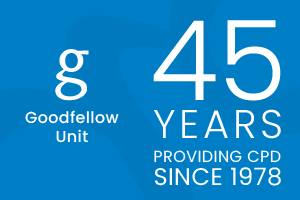Starts 09:00 Auckland local time, (New Zealand (NZDT) UTC/GMT +13 hours)
In primary care, we see interactions between the mind and body. We tend to think of the mind affecting the body, but there is a two-way function between the central and peripheral nervous systems (with a focus on the vagus nerve).
Professor Stephen Porges's Polyvagal theory explains this. It emphasizes that our autonomic nervous system helps us navigate the world to distinguish safe situations from dangerous situations. This is extremely helpful for patients with physical or psychological trauma who tend to be locked into feelings of the world being a dangerous place and are "stuck" with their dorsal vagal state predominating.
Treatment aims to encourage them to operate in the ventral or upper/newer part of their vagus nerve, where we smile, talk and listen when we can help our patients feel safe.
In this webinar Stephen will explain the history and science of the Polyvagal theory and Deb Dana will explain how it can be used in every day clinical practice.
The session will help you understand some of the puzzling experiences we have in primary care.
As always, we will answer as many questions as we can as time permits.
Resources:
- Grounded by Claire Wilson
- BPQ body perception questionnaire
- The Polyvagal Theory in Therapy: Engaging the Rhythm of Regulation (Norton Series on Interpersonal Neurobiology) - Deb Dana
- Box breathing and sigh breathing paper
- A new measure of feeling safe: Developing psychometric properties of the Neuroception of Psychological Safety Scale (NPSS). Psychological trauma: theory, research, practice, and policy.
- Deb Danas Beginners guide to Polyvagal Theory (pdf)
Video
Please note that the Polyvagal Institute requests we only have this video live on our website for 90 days. If you are a student and would like access to this presentation please contact Professor Bruce Arroll directly [email protected]
Presenter

Stephen W. Porges
Stephen is a Distinguished University Scientist at Indiana University, where he is the founding director of the Traumatic Stress Research Consortium within the Kinsey Institute. He holds the position of Professor of Psychiatry at the University of North Carolina and Professor Emeritus at the University of Illinois at Chicago and the University of Maryland.
In 1994 Dr. Porges proposed the Polyvagal Theory, a theory that links the evolution of the mammalian autonomic nervous system to social behavior and emphasizes the importance of physiological state in the expression of behavioral problems and psychiatric disorders. The theory is leading to innovative treatments based on insights into the mechanisms mediating symptoms observed in several behavioral, psychiatric, and physical disorders.
He is the author of The Polyvagal Theory: Neurophysiological foundations of Emotions, Attachment, Communication, and Self-regulation (Norton, 2011), The Pocket Guide to the Polyvagal Theory: The Transformative Power of Feeling Safe (Norton, 2017), co-editor of Clinical Applications of the Polyvagal Theory: The Emergence of Polyvagal-Informed Therapies (Norton, 2018), and Polyvagal Safety (Norton, 2021).
Dr. Porges is also the creator of a music-based intervention, the Safe and Sound Protocol™, which currently is used by more than 2500 therapists to improve spontaneous social engagement, to reduce hearing sensitivities, and to improve language processing, state regulation, and spontaneous social engagement.
Presenter

Deb Dana
Deb is a clinician and consultant specializing in using the lens of Polyvagal Theory to understand and resolve the impact of trauma and create ways of working that honor the role of the autonomic nervous system. She developed the Rhythm of Regulation Clinical Training Series and lectures internationally on ways Polyvagal Theory informs work with trauma survivors. She is a founding member of the Polyvagal Institute, clinical advisor to Khiron Clinics, and an advisor to Unyte.
Deb’s clinical work published with W.W. Norton includes The Polyvagal Theory in Therapy: Engaging the Rhythm of Regulation, Polyvagal Exercises for Safety and Connection: 50 Client Centered Practices, and the Polyvagal Flip Chart. She partners with Sounds True to bring her polyvagal perspective to a general audience through the audio program Befriending Your Nervous System: Looking Through the Lens of Polyvagal Theory and her print book Anchored: How to Befriend Your Nervous System Using Polyvagal Theory. She partners with Sounds True to bring her polyvagal perspective to a general audience through the audio program Befriending Your Nervous System: Looking Through the Lens of Polyvagal Theory and her print book Anchored: How to Befriend Your Nervous System Using Polyvagal Theory. To learn more, visit rhythmofregulation.com or polyvagalinstitute.org
